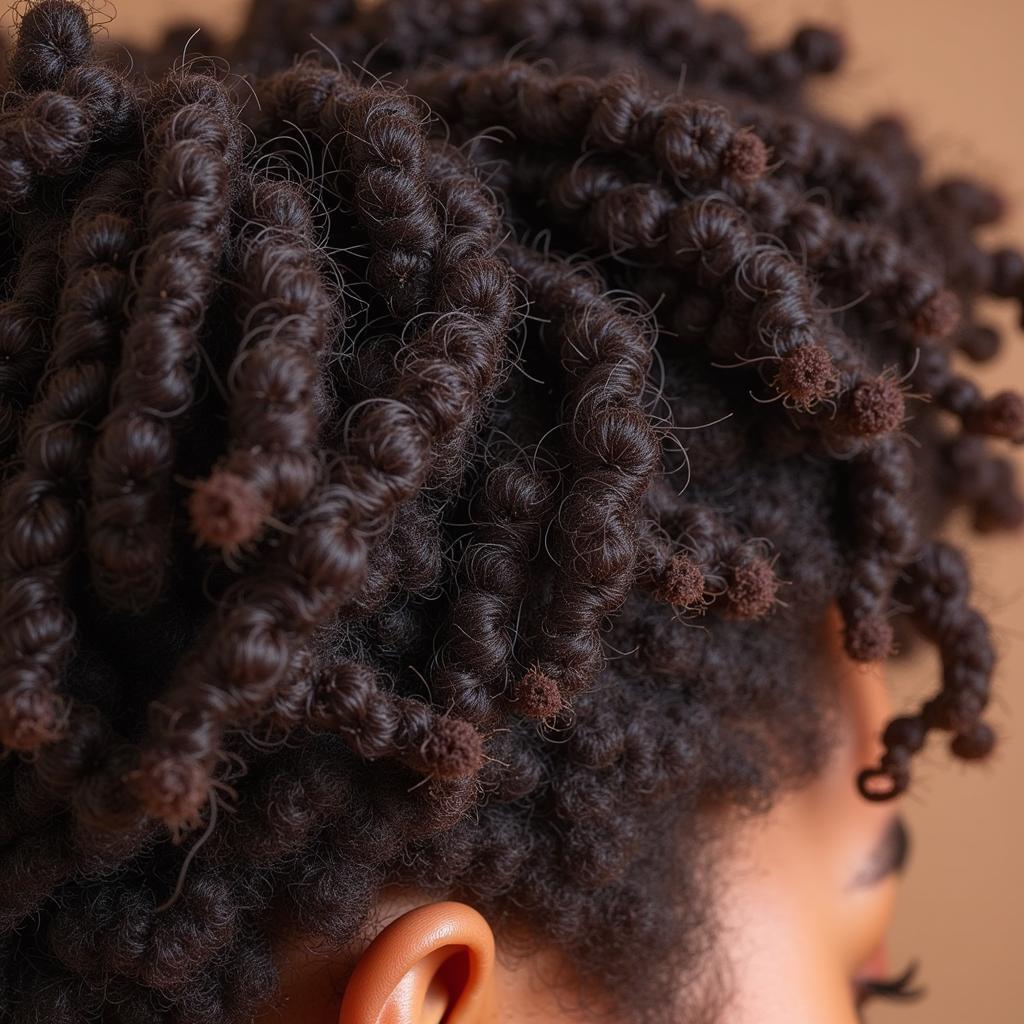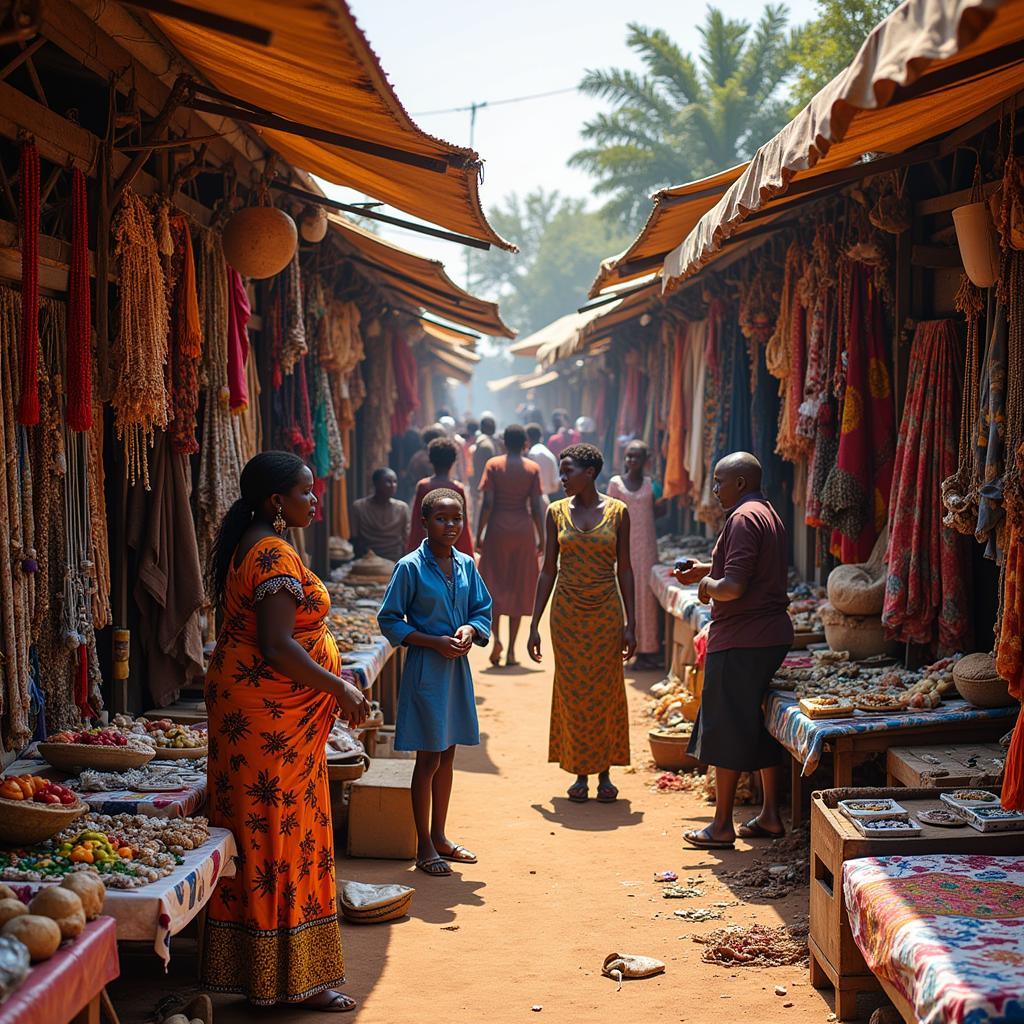African Attire Dresses Pictures: A Journey Through Style and Culture
African attire dresses offer a vibrant tapestry of colors, patterns, and silhouettes, reflecting the continent’s rich cultural heritage. From the flowing boubous of West Africa to the intricate beadwork of Southern Africa, African Attire Dresses Pictures showcase the diversity and beauty of African fashion. This article explores the captivating world of African clothing, examining its historical significance, regional variations, and evolving trends.
African clothing is more than just fabric and thread; it is a powerful symbol of identity, tradition, and artistry. For centuries, African attire has played a crucial role in storytelling, social status, and spiritual practices. Today, it continues to evolve, blending traditional techniques with contemporary designs to create unique and captivating pieces. Want to learn more about the diverse world of African fashion? Check out some inspiring african fashion designs pictures.
The History and Significance of African Attire
The history of African attire is as diverse as the continent itself. Ancient Egyptian garments, often depicted in hieroglyphics, utilized linen and intricate draping techniques. Across the continent, various indigenous materials like barkcloth, raffia, and animal hides were transformed into clothing adorned with natural dyes and embellishments. The arrival of European traders introduced new fabrics and influences, leading to further evolution in African dress.
From vibrant kente cloth in Ghana, symbolic of royalty and prestige, to the elegant Aso Oke in Nigeria, worn during important ceremonies, each region boasts unique textile traditions. These garments often incorporate intricate weaving, embroidery, and beadwork, passed down through generations. These techniques are not simply decorative; they often tell stories, convey messages, and represent clan affiliations.
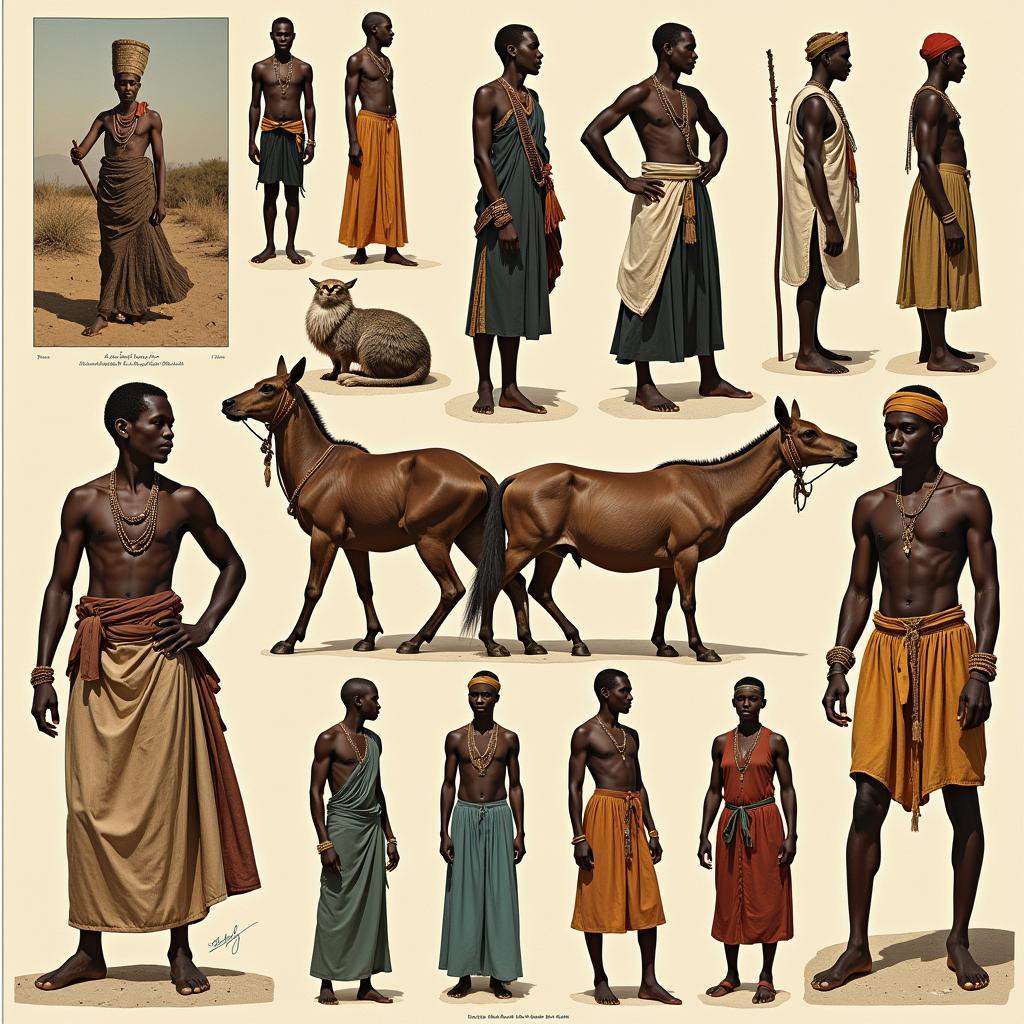 African Attire: A Historical Evolution
African Attire: A Historical Evolution
Exploring Regional Variations in African Dress
The vastness of Africa translates to a remarkable array of clothing styles, each reflecting the unique climate, culture, and traditions of its region. North African attire, influenced by Islamic traditions, often features flowing robes and head coverings, providing protection from the desert sun. West African countries showcase vibrant, patterned fabrics like kente and Ankara, used in a wide range of garments from everyday wear to ceremonial attire. Southern African dress often incorporates intricate beadwork and animal skins, reflecting the region’s close connection to nature. Looking for ideas for your little ones? Explore some adorable african clothing styles for toddlers.
What are some popular styles of African attire dresses?
Some popular styles include the flowing boubou, the fitted mermaid dress, the dashiki, and the kanga, each with its unique charm and cultural significance.
Where can I find pictures of african attire dresses?
You can find a plethora of pictures online, on social media platforms, fashion blogs, and websites specializing in African fashion. Our website also offers a selection of stunning african christian wedding pics for inspiration.
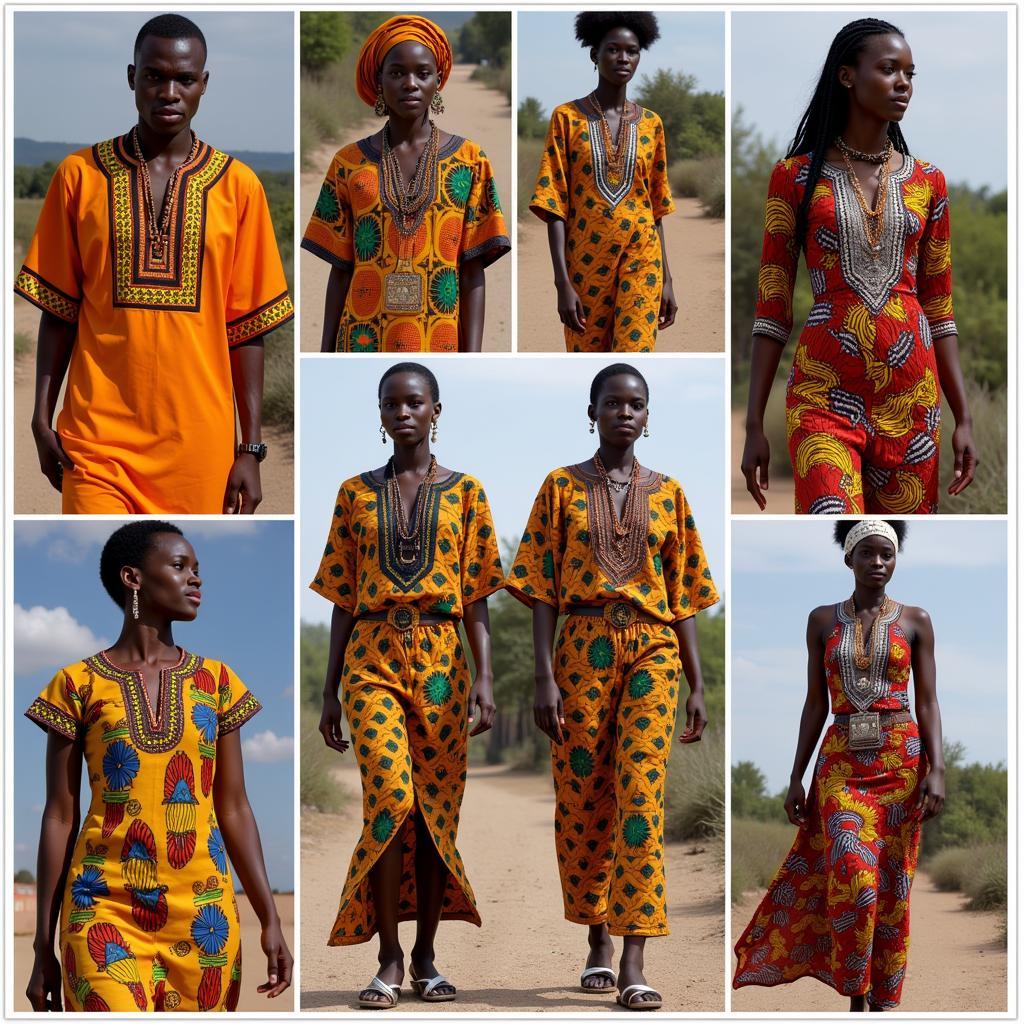 Regional Variations in African Dress
Regional Variations in African Dress
Modern Interpretations and the Global Fashion Stage
African attire has increasingly gained prominence on the global fashion stage, inspiring designers worldwide. Contemporary African fashion designers are pushing boundaries, blending traditional techniques with modern silhouettes and fabrics. This fusion of old and new has resulted in innovative and captivating designs that celebrate African heritage while embracing global trends. Discover the fascinating african costume history and how it has shaped modern fashion.
How has African attire evolved over time?
From its ancient origins using natural materials to the incorporation of modern textiles and designs, African attire has continually evolved while retaining its cultural significance.
What is the cultural significance of African attire?
African attire is more than just clothing; it reflects identity, social status, and spiritual beliefs, often incorporating intricate symbolism and storytelling.
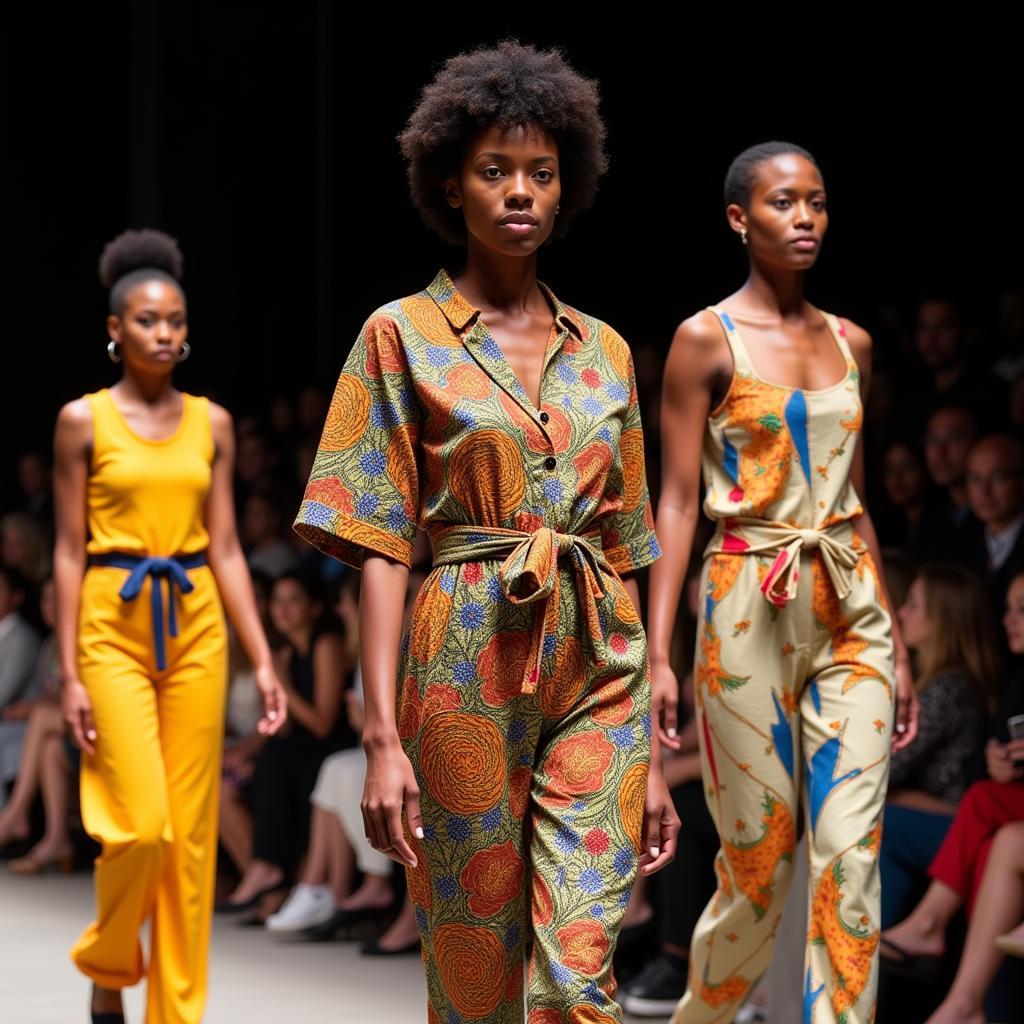 Modern African Attire on the Global Stage
Modern African Attire on the Global Stage
From Traditional to Contemporary: African Attire Dresses Pictures Showcase a Rich Heritage
In conclusion, african attire dresses pictures provide a captivating glimpse into the rich tapestry of African culture and style. From historical significance to modern interpretations, African attire continues to evolve and inspire, showcasing the continent’s unique creativity and artistry. Whether you’re fascinated by traditional garments or contemporary designs, exploring african attire dresses pictures is a journey through a world of vibrant colors, intricate patterns, and profound cultural expression.
FAQ
- What are some common fabrics used in African attire? Common fabrics include kente, Ankara, Aso Oke, and mudcloth.
- Where can I buy authentic African attire? You can find authentic African attire from various online retailers, marketplaces, and boutiques specializing in African fashion. You can also learn about african countries 5 native dress.
- How do I care for my African attire? Care instructions vary depending on the fabric and embellishments. Always check the garment’s care label for specific instructions.
- What occasions are appropriate for wearing African attire? African attire can be worn for a variety of occasions, from everyday wear to weddings, festivals, and other celebrations.
- Can I incorporate African attire into my Western wardrobe? Absolutely! Mixing and matching African prints and styles with Western clothing can create unique and fashionable looks.
- What are some popular accessories to wear with African attire? Popular accessories include headwraps, jewelry made from beads, bone, or metal, and traditional footwear.
- Where can I learn more about the history of African attire? Numerous books, articles, and online resources offer in-depth information on the history and cultural significance of African attire.
Need further assistance? Contact us at +255768904061, email kaka.mag@gmail.com or visit us at Mbarali DC Mawindi, Kangaga, Tanzania. Our customer service team is available 24/7.
